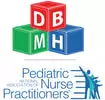Selective Mutism*
Selective mutism was formerly called 'elective mutism.' Its name was changed in 1994 to accurately reflect changes in understanding: selective mutism is not a purposeful refusal to speak, but a failure to speak in specific social settings. These children can be described as a “chatterbox” at home and nonverbal in other environments.
DSM-V Diagnostic Criteria:
Selective Mutism must be differentiated from: communication Disorders (e.g., social communication disorder, childhood-onset fluency disorder, speech sound disorder, language disorder), autism spectrum disorder, schizophrenia, intellectual disability, social anxiety disorder, other psychotic disorders.
Diagnostic Features:
DSM-V Diagnostic Criteria:
- Consistent failure to speak in specific social situations in which there is an expectation for speaking (e.g., at school) despite speaking in other situations.
- The disturbance interferes with educational or occupational achievement or with social communication.
- The duration of the disturbance is at least 1 month (not limited to the first month of school).
- The failure to speak is not attributable to a lack of knowledge of, or comfort with, the spoken language required in the social situation.
- The disturbance is not better explained by a communication disorder (e.g., childhood-onset fluency disorder) and does not occur exclusively during the course of autism spectrum disorder, schizophrenia, or another psychotic disorder.
Selective Mutism must be differentiated from: communication Disorders (e.g., social communication disorder, childhood-onset fluency disorder, speech sound disorder, language disorder), autism spectrum disorder, schizophrenia, intellectual disability, social anxiety disorder, other psychotic disorders.
Diagnostic Features:
- Does not initiate speech or reciprocally respond when spoken to by others
- Lack of speech occurs in social interactions with children or adults
- Will speak in their home in the presence of immediate family members but often not even in front of close friends or second-degree relatives
- Disturbance often marked by high social anxiety
- Often refuse to speak at school, leading to academic or educational impairment, as teachers often find it difficult to assess skills such as reading
- Lack of speech may interfere with social communication
- Associated behavioral features may include: excessive shyness, fear of social embarrassment, social isolation and withdrawal, clinging, compulsive traits, negativism, temper tantrums, and mild oppositional behavior
Assessment & Screening Tools
- Norm-reference parent/caregiver and teacher report measures
- Competency-based tools such as interviews and observations
- Hearing screen to rule out hearing loss/dysfunction as a possible contributing factor
- Selective Mutism Questionnaire
- School Evaluation for Selective Mutism SM-CDQ-Brief School
- BASC-2 (Behavior Assessment System for Children) ($)
- CELF-4 ORS (Clinical Evaluation of Language Fundamentals Observational Rating Scale – administered by a SLP) ($)
- Peabody Picture Vocabulary Test (receptive language – administered by a SLP) ($)
- Expressive Test of Narrative Language (expressive language – administered by a SLP) ($)
- Word Memory Subtest from test for Auditory Processing Disorders (administered by a SLP)
Position Papers & Practice Parameters
- Position Statement on Selective Mutism Treatment (Selective Mutism Association) (n.d.)
Articles
- Selective Mutism: A Review of Etiology, Comorbidities, and Treatment (Wong, 2010)
- Selective Mutism: A primer for parents and educators (Kehle, Bray & Theodore, 2004), National Association of School Psychologists
- Selective Mutism: A Three-Tiered Approach to Prevention and Intervention (Busse & Downey, 2011)
- Treatment of Selective Mutism: A 5-year Follow-Up Study (Oerbeck, et al, 2017)
-
The Use of Medication in Selective Mutism: A Systematic Review (Manassis, et al, 2016)
Resources
|
Organizations
Books
Recommended Reading List for Children, Parents, and Clinicians:
|
*Page contributors: Christie Hance, BS, RN and Charmaine Limpioso, BSN, RN, CPN.
